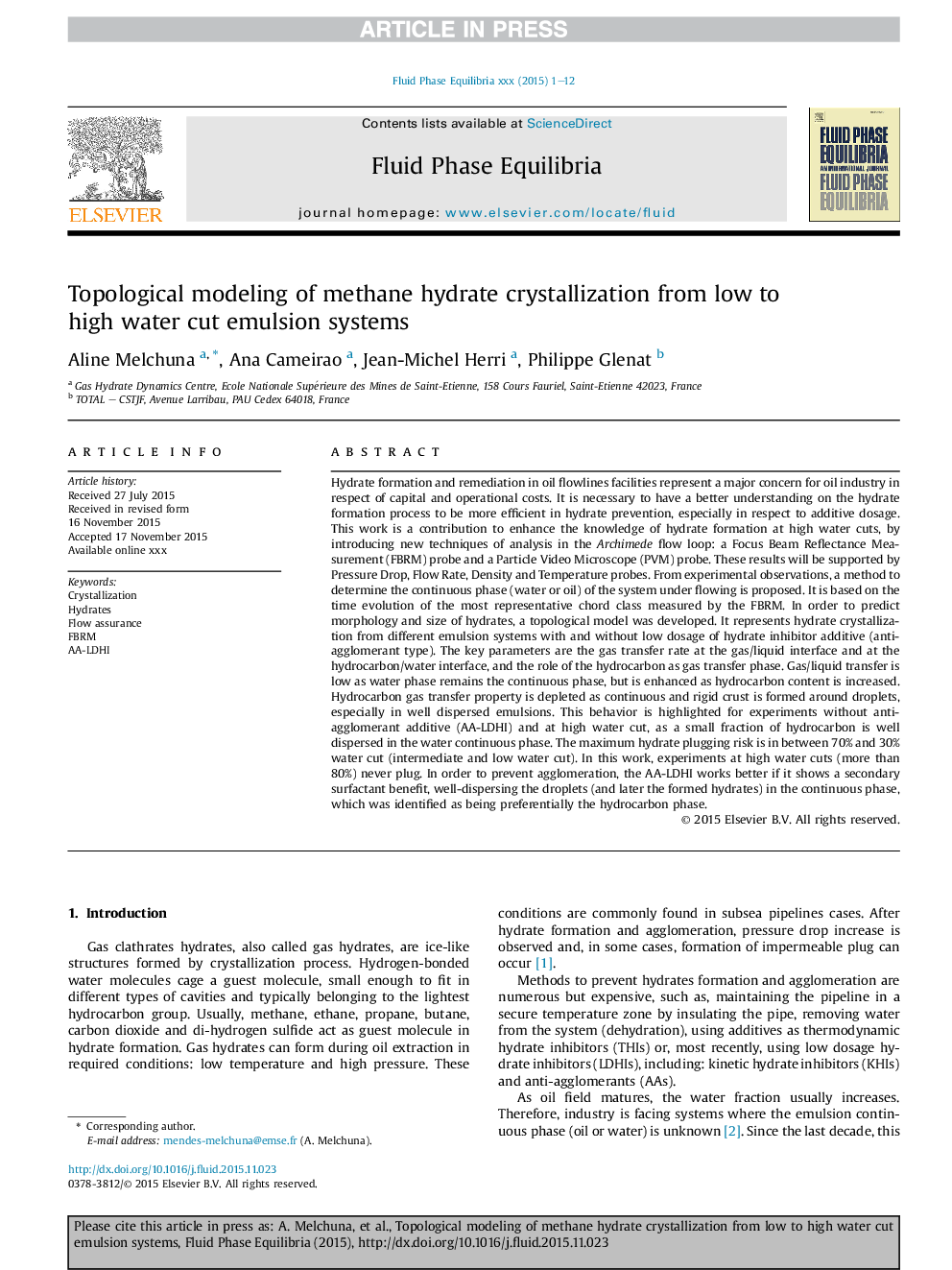| کد مقاله | کد نشریه | سال انتشار | مقاله انگلیسی | نسخه تمام متن |
|---|---|---|---|---|
| 6619540 | 460528 | 2016 | 12 صفحه PDF | دانلود رایگان |
عنوان انگلیسی مقاله ISI
Topological modeling of methane hydrate crystallization from low to high water cut emulsion systems
ترجمه فارسی عنوان
مدلسازی توپولوژیک از کریستال شدن هیدرات متان از سیستم های امولسیونی کم به آب
دانلود مقاله + سفارش ترجمه
دانلود مقاله ISI انگلیسی
رایگان برای ایرانیان
موضوعات مرتبط
مهندسی و علوم پایه
مهندسی شیمی
مهندسی شیمی (عمومی)
چکیده انگلیسی
Hydrate formation and remediation in oil flowlines facilities represent a major concern for oil industry in respect of capital and operational costs. It is necessary to have a better understanding on the hydrate formation process to be more efficient in hydrate prevention, especially in respect to additive dosage. This work is a contribution to enhance the knowledge of hydrate formation at high water cuts, by introducing new techniques of analysis in the Archimede flow loop: a Focus Beam Reflectance Measurement (FBRM) probe and a Particle Video Microscope (PVM) probe. These results will be supported by Pressure Drop, Flow Rate, Density and Temperature probes. From experimental observations, a method to determine the continuous phase (water or oil) of the system under flowing is proposed. It is based on the time evolution of the most representative chord class measured by the FBRM. In order to predict morphology and size of hydrates, a topological model was developed. It represents hydrate crystallization from different emulsion systems with and without low dosage of hydrate inhibitor additive (anti-agglomerant type). The key parameters are the gas transfer rate at the gas/liquid interface and at the hydrocarbon/water interface, and the role of the hydrocarbon as gas transfer phase. Gas/liquid transfer is low as water phase remains the continuous phase, but is enhanced as hydrocarbon content is increased. Hydrocarbon gas transfer property is depleted as continuous and rigid crust is formed around droplets, especially in well dispersed emulsions. This behavior is highlighted for experiments without anti-agglomerant additive (AA-LDHI) and at high water cut, as a small fraction of hydrocarbon is well dispersed in the water continuous phase. The maximum hydrate plugging risk is in between 70% and 30% water cut (intermediate and low water cut). In this work, experiments at high water cuts (more than 80%) never plug. In order to prevent agglomeration, the AA-LDHI works better if it shows a secondary surfactant benefit, well-dispersing the droplets (and later the formed hydrates) in the continuous phase, which was identified as being preferentially the hydrocarbon phase.
ناشر
Database: Elsevier - ScienceDirect (ساینس دایرکت)
Journal: Fluid Phase Equilibria - Volume 413, 15 April 2016, Pages 158-169
Journal: Fluid Phase Equilibria - Volume 413, 15 April 2016, Pages 158-169
نویسندگان
Aline Melchuna, Ana Cameirao, Jean-Michel Herri, Philippe Glenat,
